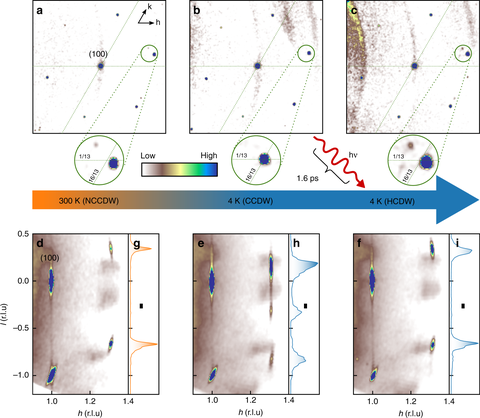06.03.2020
Laser pulses switch between collective quantum states

Figure: Photo-induced collective spatial order of electrons in a 1T-TaS2 nanosheet.
Quirin Stahl, Maximilian Kusch, Florian Heinsch, Gaston Garbarino, Norman Kretzschmar, Kerstin Hanff, Kai Rossnagel, Jochen Geck & Tobias Ritschel
Not long ago a photo-induced insulator-to-metal transition (IMT) into a so-called hidden quantum state has been discovered in the layered material 1T-TaS2. Fueled by potential applications – such as novel memory or quantum computing devices – intense research efforts aim to reveal the microscopic mechanism behind this fascinating non-thermal phase transition. So far, however, the underlying microscopic mechanisms remained largely illusive.
Researchers from the European Snychrotron Radiation Facility, the University of Kiel and the IFMP of the TU Dresden studied the laser-induced hidden state of 1T-TaS2 by means of state-of-the-art x-ray diffraction. It turned out that the laser-driven IMT involves a marked electronic reordering of charges and orbitals in the direction perpendicular to the TaS2-layers. More specifically, the collapse of interlayer molecular orbital dimers has been identified as a key mechanism for this non-thermal collective transition between two truly long-range ordered electronic crystals.
Original publication:
Q. Stahl, M. Kusch, F. Heinsch, G. Garbarino, N. Kretschmar, K. Hanff, K. Rossnagel, J. Geck, T. Ritschel, Collapse of layer dimerization in the photo-induced hidden state of 1T-TaS2, Nature Commun. 11, 1247 (2020)
